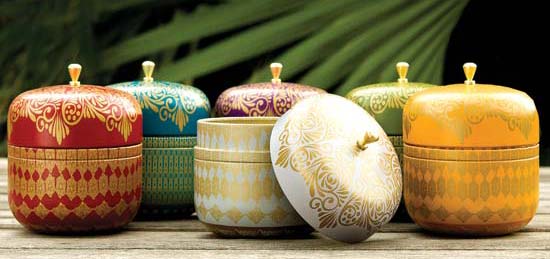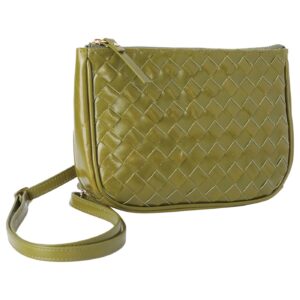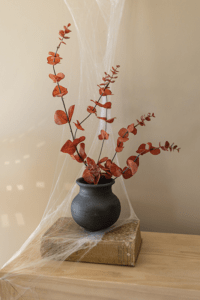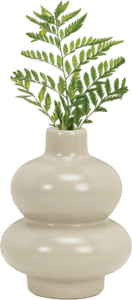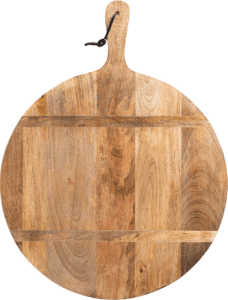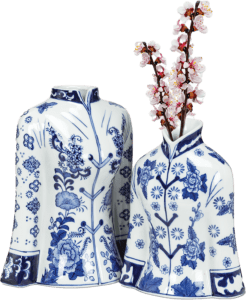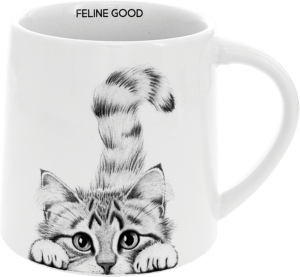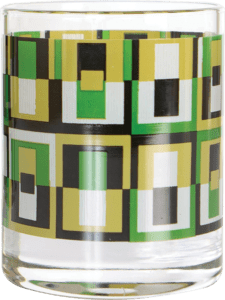The Smell of Success
Candles may by and large be small, but their impact is anything but: U.S. retail sales of candles are estimated at approximately $2 billion annually; more than 1 billion pounds of wax are used in producing the candles sold each year in the country, and it’s thought that more than 10,000 different candle scents are available to U.S. consumers, according to the National Candle Association.
What keeps the product category from burning out? “Candles are a very affordable mini-luxury, they make great gift items, and, relatively speaking, they’re not particularly expensive,” says Barbara Miller, spokesperson for the National Candle Association, a trade association representing U.S. candle manufacturers and their suppliers.
Women across all age groups are the biggest audience for candles, although manufacturers and store owners say that men are buying candles more often than before. Scent is the most important factor for shoppers, while color, cost, and shape also rank as attributes to consider.
Quality too, is gaining in importance. “People are wanting a top-quality candle instead of something that may or may not burn all the way down,” says Dianne Proctor, vice president of product development for Aromatique, based in Heber Springs, AR. “We do a tremendous amount of testing before we ever put a candle on the market. I think they see the work that’s been put into it as far as the performance of the candles themselves.”
The retail price of a candle generally ranges from approximately 50 cents for a votive to $30 for a large pillar or jar candle, with prices for highly unusual or embellished artisan candles reaching $200 or more, reports the National Candle Association. As the external macro trends go, so too do the candles. “We actually look at lifestyle trends, color forecasts, global trips and shows, food, pop culture, prints and patterns, and home décor before we introduce our fragrances,” says Karen Woods, director of PR for Yankee Candle.
Clean and green
 At The Hitching Post in Reading, MA, candles are a key part of the gift inventory, with the store offering a selection of votives, jars, and tea lights from Beanpod Soy Candles, as well as tapers and wider-diameter collenettes, a formal dinner candle, by Root. “Both companies are soy-based, which is really important for us,” says Leslie Leahy, owner of The Hitching Post. “It’s a better candle, it burns cleaner, it burns longer, and customers get more value for their money. Both companies make their products in the U.S., which is also important to us.”
At The Hitching Post in Reading, MA, candles are a key part of the gift inventory, with the store offering a selection of votives, jars, and tea lights from Beanpod Soy Candles, as well as tapers and wider-diameter collenettes, a formal dinner candle, by Root. “Both companies are soy-based, which is really important for us,” says Leslie Leahy, owner of The Hitching Post. “It’s a better candle, it burns cleaner, it burns longer, and customers get more value for their money. Both companies make their products in the U.S., which is also important to us.”
It’s not just at The Hitching Post that eco-friendly candles are gaining traction. Maura Utley has created an entire line of candles, called Soyveda, to cater to the green consumer. “There’s a general trend to get back to everything that’s natural and reduce chemicals in one’s life,” Utley says.
The crowd for whom green is a way of life—and anyone who wants to be healthier and more eco-friendly—will find the new Soyveda line, based on the Ayurvedic system of traditional medicine, a perfect fit. The Soyveda candles use only 100 percent soy wax and fragrances made from organic ingredients. They’re also entirely vegan and don’t contain any chemical solvents, parabens, dioxins, phthalates, or other harmful synthetics. “The yoga market has totally embraced this candle,” Utley says. “They finally feel they have a candle they can call their own.”
Packaged in a decorative tin, the candles come in a jar that can be reused over and over again. This has made them attractive for florists and nurseries to use in displays and the natural and organic ingredients play well in hospital gift shops.
Yuthica, too, offers USA-made, 100 percent natural soy candles with cotton wicks and no added coloring. “All our scents are very natural fragrances,” says Chinku Mahindra, founder of Yuthica in North Andover, MA. “It’s not like a weak candle, so to speak, but we feel that it should be something that’s around in a room but not overpowering so it takes over a space.”
As Leahy notes, “Candles are a real steady Eddie, but the biggest thing to come down the pike is soy-based because of the way it burns. Because it’s a cleaner-burning candle, you don’t get the black soot you often see on paraffin wax candles.”
Relax and say spa-aah
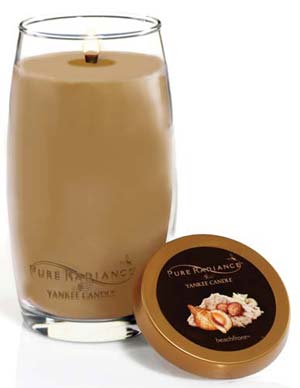 Going hand in hand with the trend toward eco-conscious candles is the rise of the candle that would be just as home in an upscale spa as it would be in a home. “The largest overall change in maybe the last five years has been sort of the popularity of the spa candle—the look of straight-sided, clear glass containers,” Miller says.
Going hand in hand with the trend toward eco-conscious candles is the rise of the candle that would be just as home in an upscale spa as it would be in a home. “The largest overall change in maybe the last five years has been sort of the popularity of the spa candle—the look of straight-sided, clear glass containers,” Miller says.
Yuthica’s candles, packaged in a glass jar, fall within the spa aesthetic, with the current best-sellers—all aptly given soothing names—being C’est Bon (a blend of grapefruit, lemon, and mandarin), Namaste (teakwood, amber, and patchouli), Om (ylang-ylang, amber, and woods), Mariquita (litsea, lemongrass, and geranium), and Nirvana (carnation, nutmeg, and ylang-ylang). The candles are hand-poured, blended, packaged, labeled, and packed for delivery in Mahindra’s home studio in Massachusetts.
One of the standout offerings for the spa-loving crowd is Yuthica’s Double Dipp candles, a blend of soy wax, jojoba butter, avocado oil, vitamin E, cocoa butter, shea butter, and essential oils that results in a lotion that burns 2 degrees higher than body temperature. “It’s really the most emollient stuff you’ll ever use; it’s fantastic for winter months when your skin is really dry,” Mahindra says. “It comes in a porcelain jar with a spout, so you can pour it and use it as massage oil all over the body, or some people just use it as a candle, then walk by and take some as a hand cream.”

Home sweet home décor
 As people increasingly work to make their homes well-styled havens, candles fit well into their lifestyle. “When you think about the economy and how many people are staying in the home more, I think we’re seeing more use with candles adding to the décor of their home,” says Woods of Yankee Candle. “They’re willing to spend money on candles because they want their home to be that place they entertain.”
As people increasingly work to make their homes well-styled havens, candles fit well into their lifestyle. “When you think about the economy and how many people are staying in the home more, I think we’re seeing more use with candles adding to the décor of their home,” says Woods of Yankee Candle. “They’re willing to spend money on candles because they want their home to be that place they entertain.”
As a result, Yankee Candle recently debuted a contemporary line called Pure Radiance that’s meant to complement home décor and reflect the consumer’s sense of style. Trays and vase holders coordinate with the candles to give different decorating options. The collection launched with 12 fragrances, including the warm and well loved Cinnamon Scone, sophisticated After Dark, and wine-inspired Grapevine, and will add more this fall and holiday season.
Getting back into the candle game is Tag, a gifts and decorative accessories manufacturer that featured candles as an important part of its product mix when it was founded three decades ago. Along the way, candles fell out of rotation, but now they’re back for fall/holiday 2012 in eight fragrances that will go with the textiles, ceramics, tabletop, lighting, and other products the company is known for.
“It’s not just a high-quality, great fragrance, but it’s also packaged in a vessel or container that’s very on trend as far as design and can coordinate with a variety of things already in their home,” says Tiffany Good, product manager for Tag. So far, the candles from the Foxy Fall collection, housed in ceramic acorn-shaped containers, are selling best. They come in Cinnamon Sticks, Vanilla Pumpkin Latte, and Autumn Fig and Melon fragrances.
“Candles aren’t a single note so much anymore,” Good says. “It used to be just cinnamon or apple, but I see a lot more blended fragrances.”
Get away
 Even with the trend toward higher-design candles that complement a home décor scheme, the idea of escaping with a candle purchase is a big one now, too. “The aspirational side of the business is taking off,” says Beth Sturm, director of brand development for Colonial Candle. “People want to buy a product that evokes an emotion or a memory.”
Even with the trend toward higher-design candles that complement a home décor scheme, the idea of escaping with a candle purchase is a big one now, too. “The aspirational side of the business is taking off,” says Beth Sturm, director of brand development for Colonial Candle. “People want to buy a product that evokes an emotion or a memory.”
In January, Colonial Candle launched a Destinations line that offers four scents evocative of a certain location, including St. Barths (Coral Hibiscus, Cocoa Plum, Topaz Waters, and Melon Mojito) and Cape Cod (Peach Cobbler, Old Fashioned Lemonade, Line Dried Linen, and Salt Water Taffy). Come fall, they’ll roll out a Marrakesh collection (Spice Market, Golden Sahara, Marrakesh Mint Tea, and Mosaic Fountain), and this summer, a limited-edition London collection will coincide with the Olympic Games with Chocolate Soufflé (rich custard notes of melted chocolate and caramelized sweet sugar), Afternoon Tea (notes of lemon juice, white freesia, and freshly brewed tea), Abbey Road (undertones of green galbanum, earthy musk, and flower top notes), and Poppy Fields (a blend of wild strawberry, leaves, and cream rose petals).
Colonial Candle isn’t the only company capitalizing on the idea of a getaway for its products. “Trends in candles pretty well mirror fashion and home furnishing trends,” says Miller of the National Candle Association. “If you go to any clothing store, there’s a push toward more vibrant, kind of tropical colors. They can range from the palest watery blues that you’d associate with a tropical island reef to the sands and creams at the beach to the more vibrant corals, yellows, pinks, and purples.” Miller adds that there’s a tropical escape feeling to the scents as well, with a lot of light fruity fusions, including mango, peach top notes, berry, lime, and coconut.
Showing off your selection
 Watson Kennedy Fine Home, which has been featured everywhere from Lucky to Real Simple to The New York Times, shows off its candles in an eye-catching way. “Typically, we keep candle lines displayed together,” Kennedy Watson explains. “For our Diptyque display, they are housed in vintage apothecary cases. For our Votivo display, they are together in vintage gym locker cases.”
Watson Kennedy Fine Home, which has been featured everywhere from Lucky to Real Simple to The New York Times, shows off its candles in an eye-catching way. “Typically, we keep candle lines displayed together,” Kennedy Watson explains. “For our Diptyque display, they are housed in vintage apothecary cases. For our Votivo display, they are together in vintage gym locker cases.”
At The Hitching Post, the Beanpod Soy Candles collection is located in a candle hutch and alphabetized by scent, with selections of kitchen aromas like vanilla and coffee, floral scents like lavender and rose, and fruity smells like orange and lime cooler. The taper candles are arranged by color. “We cross-merchandise with candle holders and dried florals to give people ideas on centerpieces,” Leahy says. “It benefits the candles and the other products we have.”
Showing candles in a variety of settings and used in creative ways is a great way to get customers to see the possibilities. “Merchandising is so important,” Woods says. “Make sure you have the right accessories and candle accessories displayed with the candles so [the shopper] can see not only that candle but how it can be displayed in her home.”
To promote the Soyveda candles, the company is thinking outside the box, offering a “Dosha Quiz” that helps shoppers identify which dosha (three energies that must be kept in balance, according to Ayurvedic wisdom) describes them, and thus which candle would be best. “The longer you have the customer standing there and emotionally engaging with the product, the more likely you are to sell it,” says Utley, who adds that the quiz makes a great basis for a party. She also encourages retailers to put up signage at local yoga studios or massage centers to drive the ideal customer to the store.
The quiz is a good example of engaging your customer with the product, and anytime you can help someone make an emotional connection with a candle, that will help you sell. As Woods says, “Candles are more than just a decoration—they’re really a way to keep memories alive in your home.”
